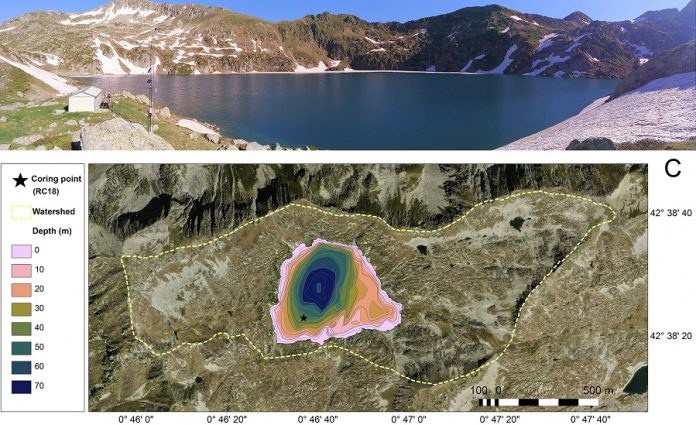
New research has revealed that people may have brought fish to a high mountain lake in Europe much earlier than anyone thought—possibly as far back as the 7th century CE.
This discovery, based on ancient DNA found in lake sediments, shows that human impact on remote natural ecosystems may have started centuries before written records began.
The study, published in Nature Communications, focused on Lake Redon, a high-altitude lake in the Pyrenees Mountains of Spain. Today, the lake is home to around 60,000 brown trout.
But thousands of years ago, like many other mountain lakes, it was fishless. Natural barriers made it nearly impossible for fish to reach such high elevations on their own.
Historical documents show that fish stocking—the practice of adding fish to lakes—was happening in some parts of Europe by the 14th and 15th centuries CE.
These records usually discuss fishing rights and trade, but don’t say when the stocking first started.
To find out if it began earlier, researchers led by Elena Fagin took a closer look at the lake’s sediments.
They collected a 30-centimeter-long sediment core from the bottom of the lake. This core contained layers of material deposited over 3,200 years, like a timeline of the lake’s history.
While they didn’t find any preserved fish DNA, they did discover DNA from fish parasites and fish prey—organisms that can only live in a lake if fish are present.
Surprisingly, DNA from fish parasites appeared in the sediment as early as the 7th century CE, and became more regular around the 9th century—nearly 500 years before historical documents began mentioning fish in mountain lakes.
This timeline matches archaeological evidence that the area was used for sheep grazing during the Late Roman and Visigothic periods, suggesting that humans were present and may have added fish for food or trade.
Despite changes in the surrounding human population over the centuries, the presence of fish in Lake Redon remained steady, which suggests the fish population was healthy and stable. Climate changes might have influenced the ecosystem, but the fish likely stayed put.
This research highlights how ancient DNA can reveal hidden stories about human history and the environment. Even in remote mountain areas, people were shaping nature in ways we’re only beginning to understand.
Source: Nature Publishing Group.



